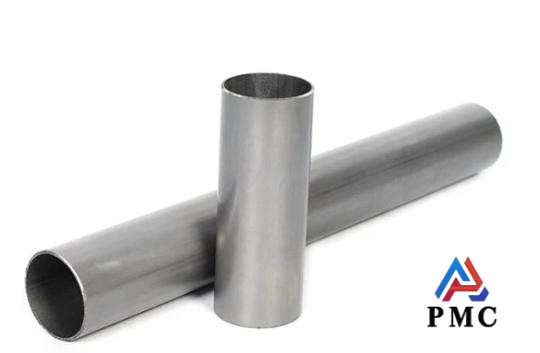
What is the Difference between Iron Pipe and Carbon Steel Pipe?
Ingredient comparison of iron pipes and carbon steel pipes
Iron pipes are mainly composed of iron, and their carbon content is relatively high. According to the difference in the internal graphite form, they can be subdivided into gray iron pipes, ductile iron pipes and other types. Among them, the carbon in gray iron pipes mostly exists in the form of flake graphite, while the carbon in ductile iron pipes is mainly distributed in the form of spherical graphite. Like the common ductile iron pipe, the main components include iron, carbon, silicon, manganese, sulfur, phosphorus and magnesium. After special processing, the graphite is spheroidized, which significantly improves the mechanical properties of the pipe.
Carbon steel pipes are also mainly composed of iron and carbon, but their carbon content is generally between 0.0218% and 2.11%, which is relatively low. In order to improve its performance, a small amount of alloy elements such as manganese and silicon are added, and some may also contain trace amounts of sulfur and phosphorus.
Manganese can improve the hardness, strength and wear resistance of carbon steel; silicon can enhance the strength and toughness of carbon steel pipes, and improve corrosion resistance and heat resistance. In some carbon steel pipes with higher performance requirements, copper, nickel, chromium, molybdenum and other elements are also added to meet the use requirements of different scenarios.

Performance comparison of iron pipes and carbon steel pipes
The hardness of iron pipes is relatively high, especially some high-carbon iron pipes, which can withstand greater pressure and impact. They can play a good role in occasions where they need to withstand heavy pressure, such as the foundation support structure of large buildings. However, iron pipes have poor plasticity and toughness, and are prone to brittle fracture when impacted by external forces. Moreover, the welding performance of iron pipes is poor, and special welding processes and welding materials are required during welding to prevent defects such as cracks and pores in the welds, which also increases the difficulty and cost of processing. In addition, iron pipes have weak corrosion resistance and are prone to rust in a humid environment, shortening their service life.
The welding performance of carbon steel pipes is relatively good. They can be easily connected with other components through welding to form various structures and piping systems. They are widely used in construction, machinery manufacturing and other industries. Its corrosion resistance is also relatively good, especially some carbon steel pipes containing alloy elements such as chromium and nickel, which can resist the erosion of atmosphere, water and certain chemicals to a certain extent. The mechanical properties of carbon steel pipes are also excellent, with a good balance of strength and toughness. They can withstand a certain amount of pressure and tension, and can bend to a certain extent without breaking, making them suitable for a variety of complex engineering environments.
Application comparison of iron pipes and carbon steel pipes
Due to its high hardness and wear resistance, iron pipes are often used to manufacture parts with high wear resistance requirements, such as mechanical parts, auto parts, agricultural machinery, etc. Ductile iron pipes are also widely used in water, oil, gas and other fields. Due to their good corrosion resistance and high strength, they can ensure the safety and stability of pipelines during long-term use. In the construction field, iron pipes can be used for structural support, ceiling suspension and fire protection systems of buildings. They can bear the weight of the building and provide structural stability.
Carbon steel pipes are used in a wider range of applications. With their good welding and mechanical properties, they are widely used in many industries such as construction, petroleum, chemical industry, machinery manufacturing, and electric power. In the construction industry, carbon steel pipes are often used as supporting materials for building frames to build the main structure of the building; In the oil and gas industry, carbon steel pipes are used to transport oil, natural gas and other liquid media, and are key pipeline materials for energy transportation. In the chemical industry, it can be used to transport various chemicals and corrosive liquids, meeting the requirements for corrosion resistance and high pressure resistance of pipelines in chemical production; In the field of mechanical manufacturing, carbon steel pipes can be used to make mechanical parts, such as engine exhaust pipes, wheel hubs, frames, etc., to meet the strength and toughness requirements of mechanical parts.
Conclusion
There are obvious differences between iron pipes and carbon steel pipes in composition, performance and use. Iron pipes have a higher carbon content, high hardness but poor plasticity and toughness, poor welding and corrosion resistance, and are often used in wear-resistant parts and specific pipeline transportation; carbon steel pipes have a lower carbon content, good welding, corrosion resistance and mechanical properties, and are widely used, covering almost every industrial field. When choosing pipes, be sure to consider specific application requirements.
Read more: Rust Removal Methods for Seamless Carbon Steel Pipes


